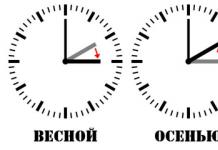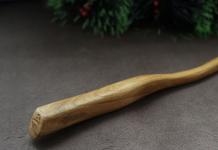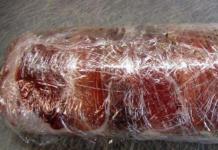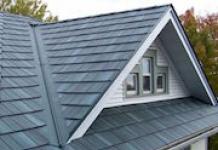When multi-level plasterboards came into fashion, it became possible to zone rooms depending on their functional purpose. Even 20 years ago, it was possible to highlight a certain part of the room by painting a section of the suspended ceiling a different color. Today, LED ceiling lighting is used for this.
This lighting option will make your room unique, adding comfort and attractiveness to it. Installing LED ceiling lighting with your own hands is not at all difficult.
However, this will require you to gain basic knowledge that will help you choose the right lighting devices and install them without errors. Read this article to the end and you will learn how to illuminate the ceiling in almost any room.

Backlight options
There are two most common options for how to do ceiling lighting yourself:
- Contour LED ceiling lighting with LED strip
- Illumination with built-in LEDs (imitation of a starry sky)
The second option is used when diode lighting of the ceiling (stretch) is performed. It is the most labor-intensive and financially expensive.

This ceiling with LED lighting uses miniature LED lighting fixtures, often decorated with light diffusers from Swarovski and other famous manufacturers.
The most popular LED ceiling lighting is the first option. It can be used to illuminate both plasterboard ceilings and suspended ceiling systems. In addition, components for such lighting can be purchased at any store for chandeliers and lamps at an affordable price.

The principle of contour LED ceiling lighting
How to make LED ceiling lighting with your own hands? This method is based on lighting the ceilings with LED strip placed in a plasterboard box. It is located in the second level of the suspension system and eliminates visual contact with the light source.
It seems like the lighting is coming out of nowhere. It spreads softly and limitedly to the contour of the ceiling. As an option, you can use an LED strip laid in a wide foam ceiling plinth that imitates hand-made stucco. In this case, the plinth is attached to the wall only along its lower part.

A gap of 5–7 cm is left between the plinth and the ceiling. An LED strip is placed in the formed pocket between the wall and the plinth. Such a ceiling with LED lighting is much more economical than installing a plasterboard box.
It is convenient to use for illuminating suspended ceilings. Repairs in such rooms may already be completed, and installing LED ceiling lighting and ceiling plinths with your own hands is not a dusty and easy job.

Set of materials for LED lighting
For lighting, a special conductive strip with LEDs installed on it is used. There are waterproof tapes, regular (white light) and multi-colored (RGB light). The first ones are placed in a silicone, transparent tube. They cost a little more, but are protected from a possible flood from above.
A step-down transformer is used to supply voltage to the diode strip. It is installed in the circuit between the switch and the backlight source.

It is important to know! It is not recommended to install lighting in the main ceiling lighting circuit controlled by a general switch. The main light will be filled with soft contour lighting. LED ceiling lighting must be connected to a separate switch.
There are tapes that allow you to get multi-colored lighting (RGB tapes). They are more expensive and require the use of a transformer and a special controller. It programs the switching of ceiling lighting colors.
The strips also differ in the density of the LEDs and their power. The most common LED strips are with a density of 30, 60 and 120 diodes per 1 meter. The higher the density, the higher the brightness of the backlight.

Calculation of contour diode backlight
Multiply the resulting footage by the power consumption of 1 meter of LED strip. Check the power from the seller before purchasing. Based on the data obtained, you need to select a transformer (power supply) and a controller of the required power. The voltage of the transformer and controller can be 5, 12 and 24 V. Remember this when choosing devices.
Important to remember! If you find it difficult to calculate and select a transformer and controller, contact the store salesperson. He will undoubtedly help you make the right choice.

Installation and connection
The tape is sold on reels (reels similar to tape). 5 m are wound on a reel. If necessary, the tape can be cut and soldered to obtain the required size.
You can cut the LED strip with your own hands only in the places marked on it. The cutting ratio may vary for different strips. The cut tapes are soldered with your own hands according to the following scheme:
- For single-color tapes, solder two contacts “+” and “-“
- For RGB tapes, solder the same contacts “V+”, “R”, “G”, “B”
When soldering, do not overheat the tape, as the LEDs may fail.
Also, you cannot solder more than 15 m (3 coils) in series. The conductive paths will not withstand such power. In this case, it is necessary to connect the sections in parallel. In order not to damage the base of the tape and the conductive tracks, it should not be bent at an angle of 90 degrees.
When the LED strip is soldered to the required length, the transformer and controller are connected. Often the transformer is sold without a power cord, so if you don't have one, buy a lighting cable and plug. Install the wires to terminals L and N. When using RGB tape, connect the controller to the transformer.
Note! When connecting, polarity must be observed.

An LED strip is connected to the controller. If you use a single-color tape, then it is immediately connected to the transformer. The LED ceiling lighting is connected to a power source and tested for functionality. After this, thoroughly clean the surface of dust where the lighting will be installed.
A protective film is glued to the back of the diode strip. It must be removed and the tape glued to the box or pocket of the baseboard. Installation of LED ceiling lighting is completed.
LED ceiling lighting combines practicality, high functionality and excellent appearance. Using LEDs, you can create clever accents in a room and change the design of the ceiling beyond recognition. You can handle all the arrangements for arranging LED ceiling lighting yourself. It will be more convenient and easiest for a novice master to work with LED strips.
LED strips are produced in the form of a flat base with conductive tracks.

Diodes that emit light are attached to the base. LED strips have many advantages, including The following points deserve special attention:
- extreme ease of lighting installation;
- long service life;
- affordable price;
- large selection of colors;
- minimal power consumption. LED lighting is the most cost-effective compared to all other types of ceiling lighting;
- mechanical strength. During the installation process, you will not have to constantly worry that the tape may fall and break, like the same fluorescent lamps. However, during installation of the tapes, it is very important not to allow them to bend excessively.
Additionally, you can equip the LED backlight with special controllers. These are simple control systems that allow you to change the color, brightness and other backlight parameters in manual and automatic modes.
Types of LED backlight
There are several main types of LED backlighting. Choose the option that best suits your case.

General lighting
In this case, traditional lighting fixtures are completely replaced with LED elements. The backlight looks very impressive, but is used extremely rarely. To ensure equal lighting intensity, you will have to spend a significant amount of money on purchasing LED strips, which is unacceptable for many owners.

Target lighting
LED elements are placed above specific interior objects or areas of the room. A popular and widely used option for LED ceiling lighting.
Designer lighting
LEDs are used to implement a variety of design ideas. For example, a very popular technique is to use LED illumination of the contours of a suspended ceiling and all kinds of recesses in its structure. Quite often combined with target lighting.

Otherwise, when organizing LED ceiling lighting, you can give complete freedom to your imagination and create a composition that fully meets your ideas about ideal lighting.

Before you go to the store to buy LED backlight elements, be sure to familiarize yourself with the basic parameters of the elements in question and select the most optimal values for your case.
Degree of protection

There are LED strips with and without moisture protection. The protection class of waterproof LED strips is IP44. If the protection class is less than the specified value, the tape does not belong to the category of waterproof products.
Tapes without moisture protection are only suitable for installation in private homes. Apartment owners better play it safe and buy products that are resistant to moisture.
LED type
The most popular are the 3528 and 5050 diode strips. The 5050 diode strips are the most powerful and therefore the most expensive.
Otherwise, when choosing the type of LEDs, be guided by your personal preferences.

There are single-color and full-color RGB tapes. In some situations, diodes of the same color are appropriate, in others it is better for the backlight elements to change colors. Choose according to the situation and your taste.
LED installation density

Most often, elements with 30, 60, and 120 diodes per meter of strip length are used to illuminate ceiling structures. The brightness of the backlight directly depends on the number of diodes.
How to choose LED backlight elements?
When choosing LED lighting products, most buyers first of all pay attention to the cost of the product. If you are limited in finances, feel free to give preference to a single-color LED strip of the SMD3528 type with 60 diodes per 1 m without moisture protection.
If your budget is less limited, buy an SMD5050 type tape with 30 diodes or an SMD3528 type tape with 120 diodes. If you wish, you can purchase a full-color RGB tape. In such a situation, you must definitely buy a controller. Without it, your tape will simply emit white.

Buying a strip with more than 120 diodes for your home only makes sense when organizing general functional lighting for the room. Such powerful products are not used for spot and designer lighting.
Select LED backlighting taking into account the features of the main lighting fixture.
When choosing the color of the diodes, keep in mind that, for example, blue will look cold and dull even when using a powerful LED strip. For the perception of human eyes, green is the most acceptable color.
Try not to save too much on purchasing LED lighting elements.
With cheap tapes, the white balance is very quickly upset, which is why the overall perception of the backlight is greatly deteriorated. In some situations, diodes simply burn out, and replacing them causes a lot of trouble, especially when used in conjunction with tension and various suspended ceiling structures.
The procedure for arranging LED lighting
For retail, LED strips are traditionally packaged in rolls of 5 m. Before starting work, there is often a need to cut the strip into pieces of a convenient length. You can cut only in places specially designed for this - they have appropriate marks. Please take into account the fact that the cutting ratio is different for most types of LED strips.

Installation of LED lighting is usually performed on a cornice mounted between the levels of the suspended ceiling. The cornice can also be installed around the perimeter of the starting level, but in this situation it will need to be partially covered from the side to hide the frame elements.

First step. Step back about 10 cm from the ceiling and mount the starting level of the ceiling structure on a pre-installed metal profile frame.
Second step. Attach the frame of the second level of the ceiling structure to the frame of the first level. The installation must be done so that there is enough space between the second-level ceiling and the walls of the room for the passage of light from the installed LED backlight.

Third step. Cover the frame of the second level with sheets of plasterboard, at the same time creating a cornice for installing LED lighting.
At the same installation stage, bring the wires to the LEDs into the groove for placing the backlight. Temporarily secure the wires to the drywall using masking tape or tape.
Fourth step. Secure a border along the outer perimeter of the cornice - it will prevent direct light penetration into the room.
Fifth step. Putty the ceiling and begin installing the LED lighting. The ribbons must be placed so that the light is emitted from bottom to top.

Sixth step. First try to assemble the chain without gluing it to the ceiling. To do this, connect the light cord to pins L and N of the power supply.

If you are installing a full-color ribbon, connect the controller to the power supply. Make sure the polarity matches.
Seventh step. Connect the LED strip to the controller. If you are installing single-color lighting, connect the strip directly to the power supply.

Eighth step. Make sure once again that the voltages of the unit, LED strip and controller match, and then try to plug the entire network into the outlet. If everything is fine, continue following the instructions. If the backlight does not work as it should, or does not work at all, reassemble the circuit, additionally making sure that all used elements are in working order.
Ninth step. Temporarily remove the tape from the controller. Proceed to gluing the tape to the ceiling. The backlight should be placed so that the light is emitted in the direction from bottom to top. Thoroughly clean the ceiling of any kind of dirt before attaching the lighting elements. Remove the protective film from the back of the tape. Place the tape on the ceiling, align it, press it to the base and smooth it out. Attach all planned LED lighting elements to the ceiling, and then connect the strip back to the controller.



You can turn on the lighting and enjoy the unique view of the ceiling.
Thus, you can easily handle the installation of LED lighting with your own hands. To perform such work you do not need to have any special skills. Follow the instructions and everything will work out.
Good luck!
Video – DIY LED ceiling lighting
Ceiling lighting will create a special comfort and atmosphere in the room. Unique interior design elements are presented in many variations, which not only add additional volume to the room, but also visually lighten plasterboard and suspended ceiling structures.
In this article we will look at popular types and give tips on how to make ceiling lighting with your own hands.
In addition to aesthetic functions, a similar technique:
- Visually increases the height of the room.
- Provides soft diffused light that will not distract from watching TV in the evening or while getting ready for bed.

Before you decide to include lighting in the interior, you need to understand that such a system can take away the height of the room by about 10-15 cm. When developing the future design of the room, take these points into account. Use the recommendations below. They will help you make the right choice.
- Installation of lighting should be provided at the stage of installing the ceiling frame, so that electrical wires, platforms for lamps, etc. can be hidden in advance.
- Plasterboard, slatted, suspended ceilings can be made in several tiers, and, using complex geometry, give them originality. In this case, your imagination is not limited by anything. Which method of decorating the ceiling surface to choose is up to you to decide.

- On multi-level plasterboard structures, you can combine different types of lighting. For example, a starry sky in the middle and halogen lighting around the edges.
- For suspended ceilings, due to their originality, it is worth limiting yourself to only an LED strip around the perimeter of the room. Please note that different textures give completely opposite effects.
- The main disadvantage of suspended ceilings is that not all light bulbs are allowed to be mounted on them, but only of a certain power.
- To visually enlarge the space, you can hide the lighting in the recesses on the ceiling and niches.
- Evening ceiling lighting will help to dilute the interior, sparse in colors.
- If your financial capabilities do not allow you to make an original ceiling, purchase a ceiling plinth and place LEDs under it.

Ceiling lighting options
The variety of lighting devices offered by manufacturers will help illuminate the room and radically change its appearance. Common ceiling lighting options include:
- LED strips installed at the edges of the room. For multi-level structures, this technique can emphasize individual tiers or highlight geometric shapes.
- are represented by randomly or evenly spaced light bulbs mounted in a ceiling system.
- Neon tubes better than others at changing the appearance of a space. They have a long service life.

In addition, depending on the purpose, the backlight is divided into:
- Target. Used to visually divide an area into zones. For example, or a dining table in the kitchen.
- General. Represents the main lighting. In this case, spotlights are usually installed.
- Designer. This option won’t provide much artificial light, but it will make the room cozy and comfortable. This includes luminous patterns or perimeter lighting.

To choose the appropriate option, decide on the location of the lighting, the brightness you want to achieve, and of course, take into account the general style of the room.
Ceiling lighting with LED strip
Criterias of choice
When choosing an LED strip, be guided by the following criteria:
- How densely are the diodes located?
- How much power does the product consume?
- Is there any protection against moisture?

LED strips are offered for sale in various color variations. According to shades they are divided into:
- Monochrome - one color.
- Universal or RGB tapes provide several different variations - red, green, blue. RGBW stripes additionally emit white color.
The price of the products is almost the same, so it is better to choose RGBW. For such diodes, the kit is equipped with a special controller that makes it possible to adjust the shades and intensity of the glow.
LED backlights also differ in the density of diode bulbs: from 30 to 120 pieces per meter of strip. If you plan to illuminate a large ceiling, purchase products with a frequent arrangement of diodes; for a directional light source, you should use smaller indicators.

How brightly the diode bulbs glow depends on the power consumption. Models SMD 5050 and SMD 3528 are recognized as popular. The first gives 4.8 W/m with a density of 60 diodes per meter of tape, the second with the same density - 14.4 W/m.
Often included in the design of bathroom ceilings. Then it is better to use strips with additional moisture protection. Their price depends on the degree of protection.
LED lighting placement options
LED lighting can be mounted in different places of the suspension system. We will give the most common examples:
- In the niches. This arrangement seems to lift the ceiling into the air, creating a floating effect. Typically, niches are purposefully included in ceiling structures for decoration with LED lighting. The upward facing LEDs emit a soft diffused light. Side lighting with a ribbon will make the light directed, sliding along the “floating” ceiling surface.

- Inside the false ceiling. The tapes are mounted in the space between the rough ceiling and the translucent film sheet. This design makes the glow soft and diffuse, and the ceiling seems to glow from within.

- Behind the cornice. This method is the simplest and most accessible. In this case, there is no need to install a tension or suspension system. The cornice is attached to the wall, and an LED strip is laid along the edge of the baseboard.

We have already discussed illuminating the ceiling with your own hands using LED strips in articles both for plasterboard and tension structures. Therefore, we will dwell in more detail on the installation nuances associated with neon lighting and spotlights.
Peculiarities
The classic version of neon lighting is represented by glass tubes filled with an inert gas - neon. A special powder is applied to the inner surface of the “cones” - a phosphor, which emits a glow under voltage.

Due to the fact that neon ceiling lighting requires high voltage, a special current converter will have to be installed in conjunction with it. One device is placed at seven meters. The placement locations of converting devices are determined at the stage of ceiling installation. Usually, niches are made in the concrete floor where the converters are placed.
Neon lighting has the following features:
- Such variations are used only as decoration, since they provide low brightness with significant electricity consumption. A wide range of shades will be an organic addition to the overall style of the room.
- A quality product will last from 10 to 15 years.
- The standard sizes of lamps of this type are 1.5 length and 1.5 cm diameter. The temperature of the heated bulbs does not exceed 40 degrees, and the design operates almost silently.
- The junctions of the elements do not form dark spots, so the glow is uniform and continuous.
- Instead of standard products, you can decorate the ceiling with neon cord. Its flexibility greatly simplifies installation, and the device produces the same glow as lamps. The only negative is the expensive price.

Typically, neon lighting of a hidden type is most often used for rooms, placing products in hidden niches. Moreover, the narrower the hole for the exit of artificial lighting, the brighter the luminous strip.
You can use neon to highlight individual decorative elements or interior items. This will complement the overall design of the room, making the room harmonious and beautiful.
How to make neon lights
Once you have decided on the option you like, you can begin installation.
Before making a neon ceiling light, you will have to replace the wiring running from the switch to the device. The first step is to build a wall for laying a new cable. Subsequently, the cracks can be sealed with putty flush with the surface.

Therefore, it is necessary to determine the placement of lighting fixtures, as well as install wires, before installing the ceiling and renovating the room as a whole.
Neon lighting on the ceiling is placed in a special plasterboard box or behind ceiling plinths. The first method is chosen by carrying out artistic finishing at the renovation stage, before the final decoration of the walls and ceiling with finishing materials.
Lighting is installed in the plinth during the final finishing of the ceiling surface at the final stage of repair. For a clearer design of neon lighting, it is necessary to attach a small side to the plane of the cornice. To obtain diffused light, there is no need to install a board on the eaves.

For such work, it is better to choose a larger plinth, because it is very difficult to mount transformers in narrow elements. If you still want to minimize the finishing, simply “recess” the transformer in the wall niche.
Typically, neon lamps come in a kit, which, in addition to the lighting element, includes cords, fasteners, and circuits, so there should not be any special difficulties when connecting.
How to arrange devices
In addition to the requirements for, it is necessary to take into account their correct location on the ceiling surface:
- Uniform used in simple structures consisting of one level. In this case, the lamps are placed around the perimeter of the room on the entire ceiling plane.
- Group intended for illumination of individual areas. For example, when zoning space. Most often, such variations are combined with the main source of artificial light - a chandelier.

On a note! Group lighting is often used to highlight figures on stretch or plasterboard ceilings.
Before you buy appliances, clearly plan and think through possible variations in their location. Be guided by the following parameters:
- Type of light source, its power and technical characteristics.
- View of the ceiling surface.
- Placement method.

Installation of spot lighting involves the following procedure:
- Lay the wires and bring them to the installation locations of the devices at the stage of assembling the frame.
Important! The permissible distance between the lamps and the metal base of the suspended structure must be at least 25-30 cm.
- Place the wires in special corrugations to protect them from moisture, and secure them to the metal profiles with plastic clamps.
- In the final ceiling covering, make the required number of holes corresponding to the size of the lamps.
- Mount drywall to the ceiling and install appliances.
For suspended ceilings, the fixtures are fixed after fixing the canvas, but all preparatory work (electricity supply, installation of platforms, etc.) is carried out at the frame assembly stage.

When arranging lighting in your apartment, remember that it mostly serves a decorative function. Before starting work, check out the possible design options for lighting on the ceiling on the Internet, since ill-chosen methods can make the structure heavier. This especially applies to multi-level suspension systems.
LED ceiling lighting - ready-made kits (video)
Do-it-yourself LED ceiling lighting is, generally speaking, not a new thing. Radio amateurs began experimenting with lighting design based on LEDs (LED, Light Emission Diod) back in the 70s, as soon as LEDs went on sale. The obstacle to its widespread use was, first of all, the imperfection of the diodes themselves - a limited color range and a “sharp” spectrum. The too bright light from the first LEDs hurt my eyes.
Nowadays, LEDs produce light of all colors of the rainbow with a smooth, “soft” spectrum. There are special LED assemblies for sale for lighting design - LED strips, power supplies for them and controllers that allow you to smoothly adjust the color and brightness of the radiation. Now a person who is not versed in technology can practice. There are countless options, so let’s look at the most popular and technically most complex: suspended and suspended ceiling lighting. Everything else will be easier to do.
Types of LED backlight
A suspended ceiling can be illuminated in four ways:
- Contour diffused lighting– LEDs are located on the shelf (bottom row in the figure) and shine upward. The backlight forms a continuous light strip.
- Directional lighting– LEDs are mounted on a slope and shine along the ceiling. On the main (base) ceiling, diverging rays are visible.
- Spot lighting(“starry sky”) LEDs shine straight down from the ceiling. This kind of lighting is more difficult to make; You can't get by with tape, and you need some (however basic) technical knowledge.
- Shaped lighting. LEDs are placed in small ceiling lamps. To install such lighting, in addition to technical knowledge, you also need the skills of a home craftsman.
Ceiling lighting with tape
Contour and directional lighting of the ceiling with LED strip is the simplest method of lighting design and at the same time a wide field for creative imagination. Its technical details come down to the choice of tape, power source and some installation subtleties. We’ll talk about installation below, but for now let’s look at how to choose the right equipment.
Selecting LED strip
- Ribbon color. Here the choice is clear - a full-color RGB strip with a controller. The price of the ribbon itself is the same as a single color, and the controller costs less than ribbons of complementary colors. The question arises: why then have single-color ribbons at all? For special lighting over a long area, when the price of equipment matters: shop windows, trees, large halls.
- Emitter density. The density of emitters on the tape can be 30, 60 and 120 per meter. For contour lighting, it should, of course, be larger - 60 or 120. But for directional lighting, it is better to take a tape with a density of 30 or 60. If the dimensions of the installation niche allow it, it is better to install two strips: on the shelf - 60 and 120, and on slope - 30 and 60. Then you will need 4 power supplies with controllers, but such an installation will give a wide range of lighting effects: after all, the tapes can be turned on and adjusted together. You can get a double color border, alternating rays, etc.

- Belt power. LED strips are designated by the letters SMD and four numbers, for example SMD 3028. The first two digits indicate the power consumed by the strip. SMD 6035 tape will be more powerful than the above. Also, the power of one meter of tape is indicated in its passport. For contour lighting, 8 W/m is sufficient; for directional – 5 W/m. It is better to put 7 and 12-14 W tapes on the shelf, and 5 and 7 W on the slope. This will allow you to get by with cheaper controllers without brightness adjustment and will simplify color adjustments.
- Total backlight power. This parameter is calculated based on the length of the light strip. We measure with a tape measure, count how many meters of tape are needed, and multiply by the power of the meter of tape.
- We select the power source and controller according to the power required to illuminate the corresponding light strip. Of course, the supply voltage must also be suitable. LED strips are available with operating voltages of 5, 12 and 24 V. The power supply should provide the same amount, and the controller should also be designed for this voltage.
Installation of contour and directional lighting

How to install tapes in a plasterboard ceiling is clear from the figure. Let's give just a few tips:
- LED strips are mounted with Velcro; the sticky layer is applied to the back of the tape and covered with a protective film. Before installing the tape, select a PVC corner that is suitable in size for the shelf and slope, and secure it in the niche with small self-tapping screws. Velcro sticks tightly to PVC, but on drywall it can come off over time. If a suspended ceiling is illuminated, a PVC corner is required: after all, for the smallest repairs to the lighting it will have to be removed.
- Carefully solder the wires to the strips. Their plastic base and the LEDs themselves are afraid of overheating. It is better to use flux paste for soldering, POS-61 solder or similar, with a melting point of no higher than 160 degrees, and solder with one click. If you do not have much experience in soldering small parts, it is better to invite a specialist to do the soldering.
- Do not connect more than 3 m of tape together. Conductive paths in the mass of the plastic base may not withstand high current. Connect sections 3 m long to the controller with separate wires
- When making your own electrical installation, strictly observe the polarity and purpose of the wires: + from the IP – to + the controller; respectively and –. From the controller +V, R, G, and B – to the corresponding terminals of the tapes.
- Cut and trim LED strips ONLY along the cutting lines marked by the manufacturer. The exception is the last section, but you need to cut it with sharp scissors or side cutters in one movement exactly in the middle between the diodes.

Connection diagram for LED strips to power supply and controller
As you can see, do-it-yourself hidden ceiling lighting is quite simple and already allows you to get a magnificent aesthetic effect. You can strengthen it, especially since you have already gained experience, by using other types of lighting.
Video: installation of LED strip on the ceiling in “Housing Issue”
Starry sky backlight
Components and element base
For the “starry sky” the tape is no longer suitable; separate LEDs are needed. First of all: do not try to connect many LEDs directly to a 220 V network. Uninformed people sometimes argue: yeah, in a flashlight 3 diodes glow from 6 V; This means that 100 diodes can be connected to 220 V after rectification.
It’s impossible, it will end in an accident and literally burnt money. In batteries, the internal resistance increases as the current increases, and the current through the diodes is limited. The power supply network has virtually zero internal resistance. The quenching resistor does not help: the LEDs do not hold the reverse voltage of 220 V (310 after rectification), they will immediately break through, and you will get a short circuit - a short circuit with all its consequences.
Therefore, for the “starry sky” you need the same power supply as for the strip, but at 5 V. The power of the power supply is calculated based on the number of LEDs: 10 W per 100 LEDs. Extra IP power won't hurt. Simply, since 20 diodes are enough for a “starry sky”, the simplest and cheapest IP is suitable. It is also advisable to purchase a controller-interrupter for 4-8 sections of diodes. Then the stars will blink like real ones.
When soldering individual LEDs, observe polarity: the positive lead of the diode is longer and is marked with a key, and be careful - the leads break quite easily. Also, do not forget to put an insulating tube - “cambric” - on each terminal, otherwise after installation you will not end up with short circuits.

Installation of the “starry sky”
The easiest way is to equip a suspended ceiling with “starry sky” lighting: LEDs are simply glued to the base ceiling with drops of construction silicone. All that remains is to correct them so that they do not shine too sideways, and enjoy the spectacle of the starry sky.
If the ceiling is plasterboard, you will have to cut an additional plate exactly for the ceiling niche, drill holes in it according to the number of diodes, cover it with a translucent plate on the front side, mount the electrical part and install the entire structure in the ceiling niche. It's not a matter of minutes and requires a certain skill. But, if the plate is finely corrugated, then the “stars” will produce prickly rays, like real ones. If, in addition, you paste an image of a real starry sky with nebulae, galaxies, etc. onto the covering plate, and drill holes for the diodes in accordance with the position of real stars, and use quenching resistors to select the brightness of the glow, the effect will be amazing.
Video: “starry sky” ceiling – review and installation
Shaped lighting
For figured lighting in the false ceiling, holes for small lampshades are drilled with a pen or compass drill - “ballerina”, centrifuge, into which LEDs are placed. A typical solution is one directed downwards, in the center, and 4-6, giving rays along the ceiling. But, of course, the choice of a specific solution is entirely a matter of taste for the master and his household.
About colors and blinking
Important: Ceiling lighting has a serious psychedelic effect. First of all, about blinking - you cannot use frequencies of 0.5 Hz (once every two seconds), 2 Hz (twice per second) and 7 Hz (seven times per second). They coincide with the theta and alpha rhythms of the brain and can, especially in red light, even cause an epileptic seizure.
Fast and sharp blinking using simple breakers, for example, from an emergency flashlight, is completely unacceptable. You need to use a special controller, when connected to which the diodes will light up and go out smoothly. And if there is any, even the slightest, deterioration in health during or after observing the flashing backlight, the flashing must be turned off. Especially if you hear noise in your head, spots appear before your eyes, and you feel dizzy.
Sometimes during the process of renovating an apartment, very interesting ideas come to mind on how to decorate the ceiling. Some of them are related to lighting. Often, designers or even the owners of residential premises themselves decide that a ceiling illuminated along the perimeter would look very attractive. And to implement this idea, you will need an LED strip.
Why do you need backlighting?
Ceiling lighting using LEDs is now one of the most commonly used design solutions. If you decide to completely transform the rooms in your home, then she will help you do it with the greatest effect.
On a note! The first experiments with LED lighting began in the not so distant 70s of the twentieth century - it was then that LEDs themselves appeared on the market. But at that time they were not yet of such quality that would allow them to be used in residential premises for the purpose of organizing lighting, as they irritated the eyes.

Previously, only sconces were used as additional lighting or illumination in rooms; later, spotlights appeared. However, it is LEDs that have proven themselves to be the most successful option for installing hidden lighting - after all, you don’t always want light sources to be visible to everyone. In addition, LEDs allow you to implement extremely interesting lighting options, and not only additional, but also primary.

What is so good about LED ceiling lighting?
- It allows you to implement the idea of hidden lighting - the light source, that is, the LED strip, is laid out so that it is not noticeable to humans, but at the same time it gives a lot of light and creates a luminous aura in the room.
- This type of lighting is easy to install yourself.
- LED backlighting in certain cases can act as the main light source.
- This is an opportunity to bring to life the most daring fantasies and design solutions regarding the play of light and color.
- The backlight can be not only white or yellow - LED strips are available in various color variations.
- In addition to LEDs, you can also use optical fiber - an excellent “conductor” of light, which significantly expands the possibilities of organizing lighting.
- LEDs consume little electricity during operation, which means they are economical.
- Thanks to the lighting, you can clearly delimit zones in the room, if necessary.
- Finally, lighting can serve a regular decorative role.

Prices for ceiling lamps
ceiling lamps

LED ceiling lighting also has its disadvantages. There are not many of them, but it’s worth knowing about them if you plan to install it in your apartment.
- The use of colored backlight is not always a plus. Sometimes this lighting can irritate the eyes. Therefore, it will be great if during installation you provide the ability to change the backlight colors.
- LEDs are not cheap, but they are cheaper to maintain due to their low power consumption.

The service life of the LED is quite long. Some manufacturers claim that this little bulb can burn for about 100,000 hours. But you shouldn’t trust this figure much. The fact is that over time, the LED strip begins to shine less brightly. The service life of this lighting element is considered to be the period from the beginning of its commissioning until the moment when its luminous flux decreases by 30%.

Prices for LED strip
LED Strip Light

On a note! If you use LED lighting for no more than 6 hours a day, the tape will work properly for about 10,000 hours. That is, the human eye will notice a decrease in the brightness of the glow no earlier than after 4 years of this mode of operation of the LED strip.
Types of backlight
There are several types of lighting that can be installed indoors.
Table. Types of lighting for the ceiling.
| View | Description |
|---|---|
| Gives a gentle, beautiful diffused light. The ceiling is, as it were, illuminated from below along the perimeter, contour. In this case, the LED strip is located on a special shelf (at the lower level in a prepared recess), and the light from it falls on the ceiling surface. A continuous luminous strip is formed. |
| In this case, the LEDs will be installed on a slope, which is located between two ceiling levels, shining as if along the ceiling surface. |
| This is a ceiling covering with a “starry sky” effect. LED light bulbs are installed in the finishing material. One of the most difficult types of organizing ceiling lighting, since it will require a lot of time. |
| LEDs are installed in small lampshades that will be mounted into the finished ceiling. Several light bulbs are installed, one, for example, shines down, several others create “rays” on the surface of the ceiling. |

The backlight is also divided into:
- target;
- general purpose;
- designer.

The first type is the installation of lighting to delimit certain zones in the room. Simply put, in this case, lighting is used to zone the room. For example, in the kitchen the work area may be more illuminated - additional light would not hurt.

General purpose lighting is ordinary lighting. True, most often it is implemented not with LEDs, but with the help of spotlights. Although there is an option when an LED strip can turn into a full-fledged lamp - this is.
A luminous ceiling can be installed in any room. For production, an LED strip and a stretched translucent fabric are required. The tape is attached to the rough ceiling and hidden under the tension material. As a result, when we turn on the light, we will get a completely luminous ceiling above our heads.
Attention! Installation of this ceiling is not as simple as it seems. In order for the light to flow evenly, it is very important to correctly calculate the distance from the tape to the canvas. If you make a mistake with this parameter, the ceiling will be “striped.”

Typically, a luminous stretch ceiling is combined with plasterboard edging. A small cornice is made from this material around the perimeter of the room, and a backlight with canvas is placed between its sides.
And finally, a designer version of the ceiling lighting. Such lighting will not provide a large amount of light, but it will make the room cozy and complete. Such lighting includes illumination around the perimeter of the room and the creation of luminous patterns on the ceiling.
The patterns are created according to the same principle as the luminous ceiling. Only the LED strip is placed in the shape of the desired pattern, and not across the entire draft ceiling. When you press the switch, the light will penetrate through the translucent stretch fabric and create the same figure on the ceiling surface that is made of LEDs.

By the way, the ceiling lighting does not have to be white. It can be either single-color decorative or multi-colored RGB, that is, shimmer with red, green, blue and other shades. Colored lighting, if it matches the color of the bulbs with the style of the interior and the general appearance of the room, will look very good around the perimeter of the room both with the main light on and in the dark.
Selecting materials
So, you have firmly decided to add ceiling lighting in one of the rooms at home. It doesn’t matter which one - colored, white, or even decided on a luminous ceiling. But in any case, you need to visit a hardware store where you buy the necessary materials.
The most important element is the luminous ribbon. It comes in LED and duralight. Duralight is a cord, inside of which there is a mass of small light bulbs, diode or incandescent. It is not afraid of water, very durable and flexible. Duralight can be installed on any surface. Its main drawback is its weak glow.


On a note! Duralight is a very durable light element. The fact is that the cavities inside the cord between the light bulbs are filled with polyvinyl chloride, which gives it additional density.
An LED strip is a thin and flexible board where LEDs are located at equal distances from each other.
Its main advantages:
- Possibility of installation on any surface;
- low level of electricity consumption;
- high brightness;
- ease of installation.
On a note! Sometimes other types of lamps, for example, neon, are used to install ceiling lighting. But they are too large in size and will not allow you to create beautiful decorative structures.

Prices for LED lamps
LED lamp

It is the strip of LEDs, due to its advantages, that is usually used for installing such decorative lighting.

And it is important to know how to choose the right detail for future lighting.
- First, decide what color your lighting will be. This is an important aspect, not only because the shade of light should suit the interior, but also because certain colors, whatever one may say, affect the human psyche.
Table. The impact of flowers on the human condition.
| Color | Impact |
|---|---|
| Red | An irritating, but at the same time exciting color. It is not recommended for use by people with increased irritability. |
| Blue | It puts you on guard, puts you in a working mood, and makes you collected. |
| Yellow-blue | Capable of causing hysterics. |
| Blue, sea, turquoise | It makes you think and calms you down. |
| Green, yellow-green | Calms. |
| Orange, yellow | Neutral, does not cause any special feelings. |

It is best to choose a tape that has several color variations and a controller. This way, you can choose exactly the shade that you like at the moment to suit your mood. And in your normal state, you can turn on the white light.

- Look at the density of the light bulbs. It comes in 30, 60, 120 pieces per meter. For contour lighting, experts recommend taking a strip with 60 or 120 diodes, but for directional lighting, a strip with 30 is best suited.
- Decide on the power of the tape - they also differ in this indicator. For directional lighting, buy a 5 W/m model, and for contour lighting it is better to buy a larger one – 8 W/m. To save on controllers (buy cheaper ones), 5 and 7 W tapes are placed on the slopes, and 7 and 14 W are installed on the shelf. The power of the tape will be determined by its marking, which has an alphabetic and digital code, for example, SMD 3028. The first two digits will be the power value.
- It is also important to evaluate the total power of the belt, which is calculated over the entire length. Having calculated how many meters of tape you will need, multiply this number by the power of 1 meter. Based on the obtained parameter, select the controller power for the tape.



By the way, look carefully at how the tape blinks. This type of lighting can also have a psychedelic effect due to this parameter. Do not take tapes that flicker at frequencies of 0.5 Hz, 2 Hz and 7 Hz. They can cause the development of epilepsy.

Attention! If you want to get a flickering backlight, then choose a controller to achieve this effect, which will make the diodes smoothly flare up and fade out.
So, to install ceiling lighting you will need:
- LED strip in the required quantity;
- PVC corner (you will glue the tape on it);
- power unit;
- cornice, drywall (if your ceiling does not already have slopes and shelves for placing lighting);
- network cable;
- controller;
- connectors for connecting pieces of tape.

This is the main list of required materials. Depending on how you plan to install the ceiling lights, you may need other items.
On a note! LED strip usually does not require additional adhesive material during installation - as a rule, it is already equipped with an adhesive layer. But cheap tapes usually stick to it poorly. It is better to choose a more expensive but high-quality material.
Installing perimeter lighting
Step-by-step instructions for creating a simple contour LED ceiling lighting.



Step 1. In the niche where the LED backlight will be located, attach a plastic corner around the perimeter using small screws. The fact is that the sticky layer of the tape is in good contact with PVC, but it can peel off from drywall. So do not neglect this stage of installing the backlight.

Step 2. Using a tape measure, measure the required lengths of the LED strip and cut it into pieces equal to the sides of the perimeter rectangle that you will highlight. Cut the tape only at the cut points marked on it, otherwise it will not burn.

Step 3. You can connect the segments using connectors, but it is better to solder them - it will be more reliable. Solder the contacts according to the principle - plus with plus, minus with minus. By the way, remember that you cannot combine too many tapes into one whole - they are usually produced in reels of 3-5 meters. So, more than three reels are not assembled into one structure. If there is more tape, then its segments are connected to the power supply in parallel.


Chandelier prices

Attention! The LED strip can be bent, but only if the angle is less than 90 degrees.
Step 4. Remove the wires from the system that will be needed to connect the controller and power supply. Connect the system first to the controller, and it to the power supply. Check system functionality.




Step 5. Remove the adhesive layer from the tape and attach it to the previously installed PVC corner. The backlight is ready.



Another option is to install an LED strip in a ceiling cornice.
A few words about soldering: LED strip does not like high temperatures, so soldering time should not be more than 10 seconds, and the melting point should not be more than 160 degrees.
Video - Installation of LED lighting
Starry sky
The “starry sky” ceiling is a real hit, which is becoming more popular and is increasingly used for the design of the ceiling surface. It can be made from fiber optics and using LEDs. Let's consider the second option. The main difference from the installation of the previous backlight is that this time you will need individual LEDs, and not a strip.

Step 1. This step is performed before covering the ceiling frame with plasterboard. Make many small holes in sheets of this material in a chaotic manner.

Step 2. Connect (solder) all the diodes into one circuit using wires. Check it for functionality.

Step 3. Install an LED in each of the holes in the drywall. It is best to choose light bulbs of different power - then you will be able to create a more realistic starry sky.
On a note! It will not be possible to create many stars this way - as a rule, for the appearance of real galaxies in the sky, you need an optical fiber.
Step 4. Attach the drywall to the ceiling frame as usual.

Step 5. Connect the system to the controller and power supply. The backlight in the form of a starry sky is ready.

This system also has a drawback - the LEDs glow very brightly, so diffuse starlight cannot be obtained. As an option, you can try experimenting with light diffusers.
Ceiling lighting is undoubtedly one of the best options for decorating a room. And almost anyone can handle the installation of an LED strip. The main thing is a little desire and patience, and you will succeed.






























